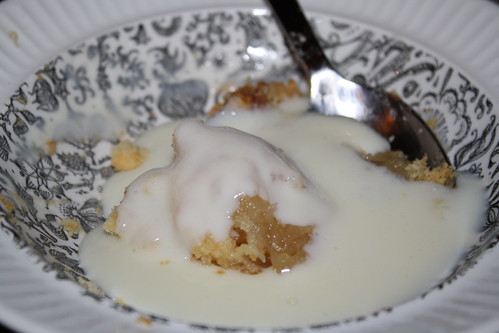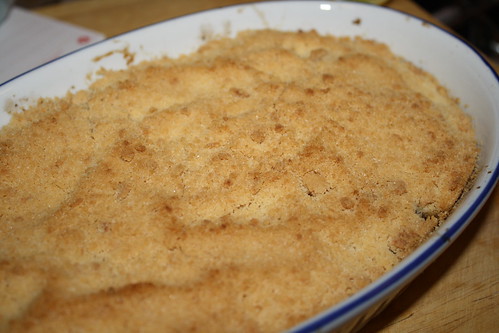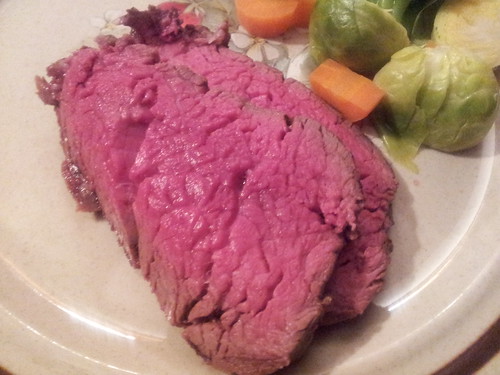
apple crumble drowned in custard
I would have been perfectly happy to have cream with our apple crumble, but Andy was not and as I had a brand new milk pan that needed trying out, custard seemed like it was on the cards.
A lot of people seem to think that custard is hard or difficult or scary. Well, it’s not though if you approach anything with that attitude, why then, yes it will be.
This recipe is a James Tanner one that I first discovered in 2006 but the original link no longer works. It is super easy – no separating of eggs or anything. All you need is a heat proof bowl, a pan and a whisk.
Begin by beating 2 eggs with 55g of caster sugar. When this is pale and creamy, heat ½ pint (that’s 285 mL) of milk (full cream, naturally) to just on boiling (this is called ‘scalding’ the milk, if you want to be technical) and then slowly pour the hot milk onto the eggs and sugar, whisking all the time. You need to keep on whisking otherwise the heat of the milk will scramble your eggs.
Return the mix to the pan, on a lower heat, and continue to beat or stir until the custard reaches the right consistency for you. I find this takes about 15 minutes. Two tips here: do make the effort to hang around doing the stirring and most certainly do NOT crank the heat up and wander away. Secondly, ensure that your stirring or whisking gets into the corners of the pan – if you don’t work your way around the pan solidly you’ll end up with lumps of cooked egg in your custard!
If you’re not planning on using your custard straight away, cut a circle of baking paper (a cartouche) and cover the custard with that. You can then gently reheat it when you’re ready.
You’ll note that homemade custard is distinctly paler in colour than anything commercial or made from a packet. Eggs, milk and cream is never going to come out bright yellow.
And, if you wish to jazz your custard up, you can infuse flavour when you scald the milk. Pop in a split vanilla bean, or a crushed cardamom pod or two, for example.
All too easy – and to be honest, not actually that unhealthy either!


